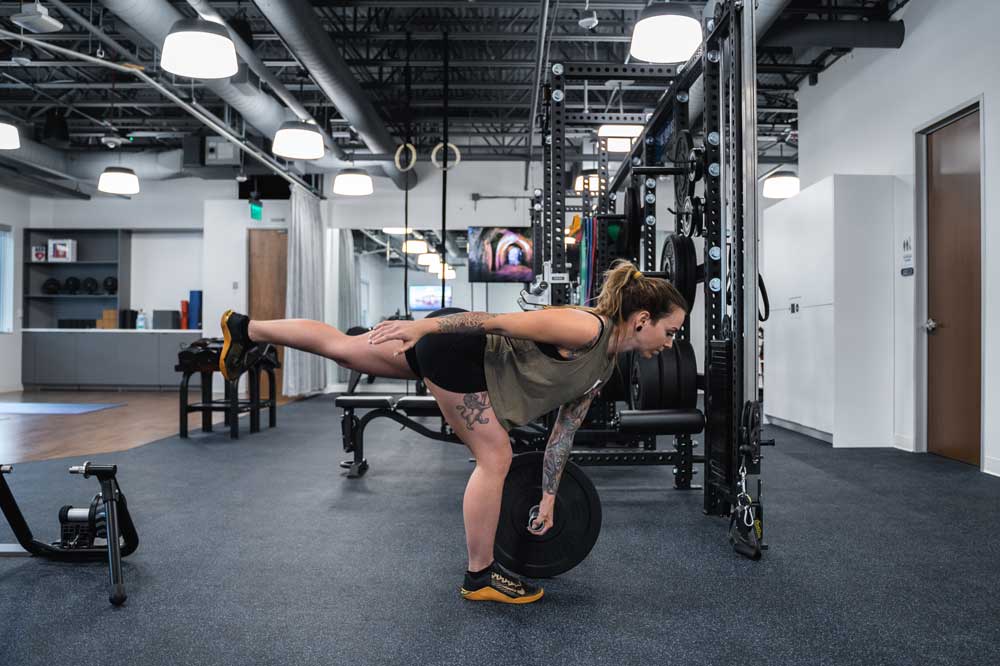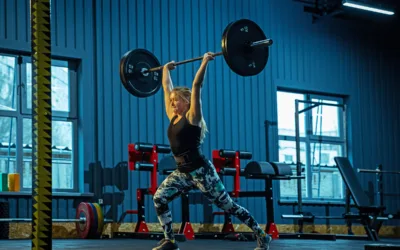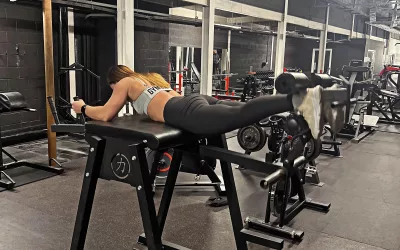A Guide to Romanian Deadlifts, King of Glute Exercises
TOPIC: Exercise guides
Glute gains are one of the hottest subjects in fitness. Hip thrusts, banded squats, clamshells, monster walks — the assortment of glute exercises is all over the place these days. Want to simplify your glute training with one really dominant movement? RDLs are where it’s at.

Written By
jakob de coninck
Jakob De Coninck is founder of Synergy Strength in Victoria, Australia, where he runs a successful in-person and online coaching business. He seeks to raise the standard of the personal training industry by focusing on science-based, intelligent and intentional training style.
Insta
Website
Programs
RDLs Rule for Glute Strength
When performed correctly, RDLs net a huge muscle response for growth in the glutes. Hip thrusts only target a small range of motion compared to the RDL. What do you need for building muscle? Range of motion. This is where the RDL takes home the gold.
But you need to execute it correctly.
Why is Range of Motion Important?
When we want to grow a muscle, the amount of range we can go through with that muscle is the key to its growth. As is putting the muscle under load during both the concentric (the “up” phase of a lift) and eccentric phase (the “down”) of a lift. The deeper your range of motion through a movement (with control), the more stretching and “tearing” the muscle endures, which is what leads to hypertrophy.
The RDL combines the best of both worlds — you don’t rest the weight on the ground at the bottom of the lift, so your posterior chain is under constant tension for the entire set.
The hip thrust, on the other hand, uses a very small range of motion and it’s easy to forget to control the eccentric phase, so you might find your glutes are working less.
How To Hinge For Perfect Romanian Deadlift Form
The reason most people botch the RDL is because they can’t hinge. We’ve all seen those videos of people rounding their backs, looking like the hunchback of Notre Dame. Another fault is squatting instead of hinging so they only feel their quads working.
There’s a simple and easy way to learn how to hinge. It starts by opening a door.
Yes, open a door to about 45 degrees, stand a foot away from it and turn so your back is to it, feet shoulder width apart. Without moving your feet, try to shut the door with your bum.
What do you notice? Your shins are vertical, your knees are only slightly bent, your chest dips forward and your hips move backward.
All of these positions are key for a quality RDL. Here’s a breakdown of cues for the RDL by body part.
Knees Fixed
When most people hinge, they squat down at the same time. Your knees should only bend slightly during an RDL — not fully locked, but also not bent like in a squat.
When you bend your knees too much, you take that vital tension out of your hamstrings and glutes. This tension is necessary to elicit a growth response. Your shins stay mostly vertical.
Hips Back
Your glutes move your hips. If your hips aren’t moving, your glutes aren’t growing. By pushing your hips backward in space you’re creating length and stretch in your glutes and hamstrings.
If your hips stop moving backwards and you feel like you’ve hit the end of your range of motion, come back up. It doesn’t matter if you’re only at mid-thigh, your flexibility might stop you there for today, but with time and practice it’ll improve. If you keep going down once your hips stop moving, something else is being loaded and 9 times out of 10 it’s your back. Hips keep moving backward.
Lats Engaged
We want the bar to stay close to our legs. If the bar leaves your body, then your back will jump in and take over the exercise. Not what we want if we’re trying to build that booty.
So what I like to cue is to imagine you’re trying to break the bar over your legs, like you’re snapping a twig. This will cause you to externally rotate your shoulders (the front of your elbow will face forward) and in turn your lats will fire up to keep that bar tight to your body. Snap the bar like a twig.

Romanian Deadlift Variations & Progressions
Use Straps to Load Up!
Hear me out: what do you think is stronger, your grip or your glutes/hamstrings? Glutes can take a whole heap more load when your grip can’t keep up, which means you don’t get to load your posterior chain to its maximum. Grab a pair of straps to take your grip limitations out of the question so you can pull more weight!
Try the B-stance RDL
Training gets boring and we need variety! This is where the B-stance RDL comes into play. To drive growth we need to keep our output high, so unilateral work is useful. The B-stance is staggered, so you target the one glute more, but use the stability of the other leg to help.
To execute, everything is the same as the RDL, except you take one foot and move it back so the toe is in line with the heel of your other leg, some people like to imagine this like a kickstand for your bike. From here perform your RDL like normal, then swap legs and repeat.
Single Leg RDL
Time to get your balance in check. With this unilateral variation, we place all the load onto one glute. This is ideal for working on your balance and any asymmetry you might feel between left and right.
To complete this you can hold a dumbbell or kettlebell in the opposite hand to the leg you are working. Lift the other leg off the floor as you hinge forward like a regular RDL. Let that weight stay straight down to ‘replace’ the leg that is pushing backward and keep you balanced.
Final Thoughts
Start including more RDLs into your program and see the difference it can make on those booty gains. Hip thrusts are great, but don’t miss out on the mega glute gains to be made from RDLs.
Find Your Perfect Training Plan
Sometimes all you need to reach your destination on your fitness journey is an expert guide. Look no further, we've got you covered. Browse from thousands of programs for any goal and every type of athlete.
Try any programming subscription FREE for 7 days!
Related Articles
You May Also Like...
The Clean and Jerk: Breaking Down the Phases
The clean and jerk is a complex and technical weightlifting movement that requires a solid level of skill and strength. It is a two-part lift that involves lifting a barbell from the ground to the shoulders (the clean), then locking out the barbell overhead (the...
The Ultimate Guide to Lunges: Queen of all Glute Exercises
Your glutes are the largest muscle group in your body. They’re responsible for almost everything your legs do—walking, running, jumping, squatting, lunging, and just standing upright. As far as moving through space goes, strong glutes are the bedrock of overall...
What’s a Reverse Hyper & Why Should You Use It?
Have you seen people on that weird machine, kicking back with both legs like some kind of superhero donkey?? The reverse hyperextension is actually an extremely useful movement for building posterior chain strength, and it pays to understand it.Written Byfred ormerod...
The Clean and Jerk: Breaking Down the Phases
The clean and jerk is a complex and technical weightlifting movement that requires a solid level of skill and strength. It is a two-part lift that involves lifting a barbell from the ground to the shoulders (the clean), then locking out the barbell overhead (the...
The Ultimate Guide to Lunges: Queen of all Glute Exercises
Your glutes are the largest muscle group in your body. They’re responsible for almost everything your legs do—walking, running, jumping, squatting, lunging, and just standing upright. As far as moving through space goes, strong glutes are the bedrock of overall...

Want more training content?
Subscribe
For Coaches
For Athletes
About
Support
Training Lab
Access the latest articles, reviews, and case studies from the top strength and conditioning minds in the TH Training Lab!
Made with love, sweat, protein isolate and hard work in Denver, CO
© 2024 TrainHeroic, Inc. All rights reserved.





